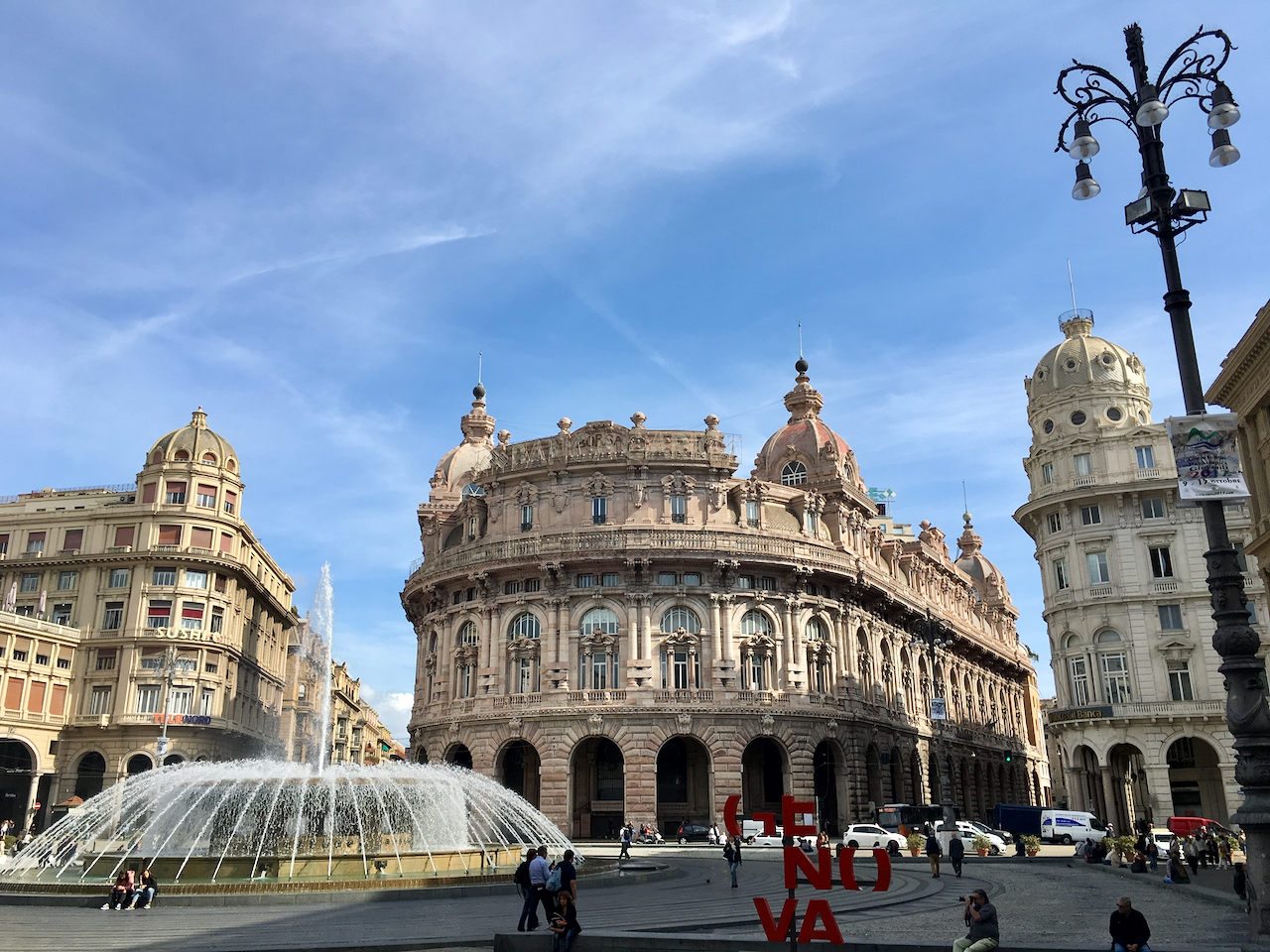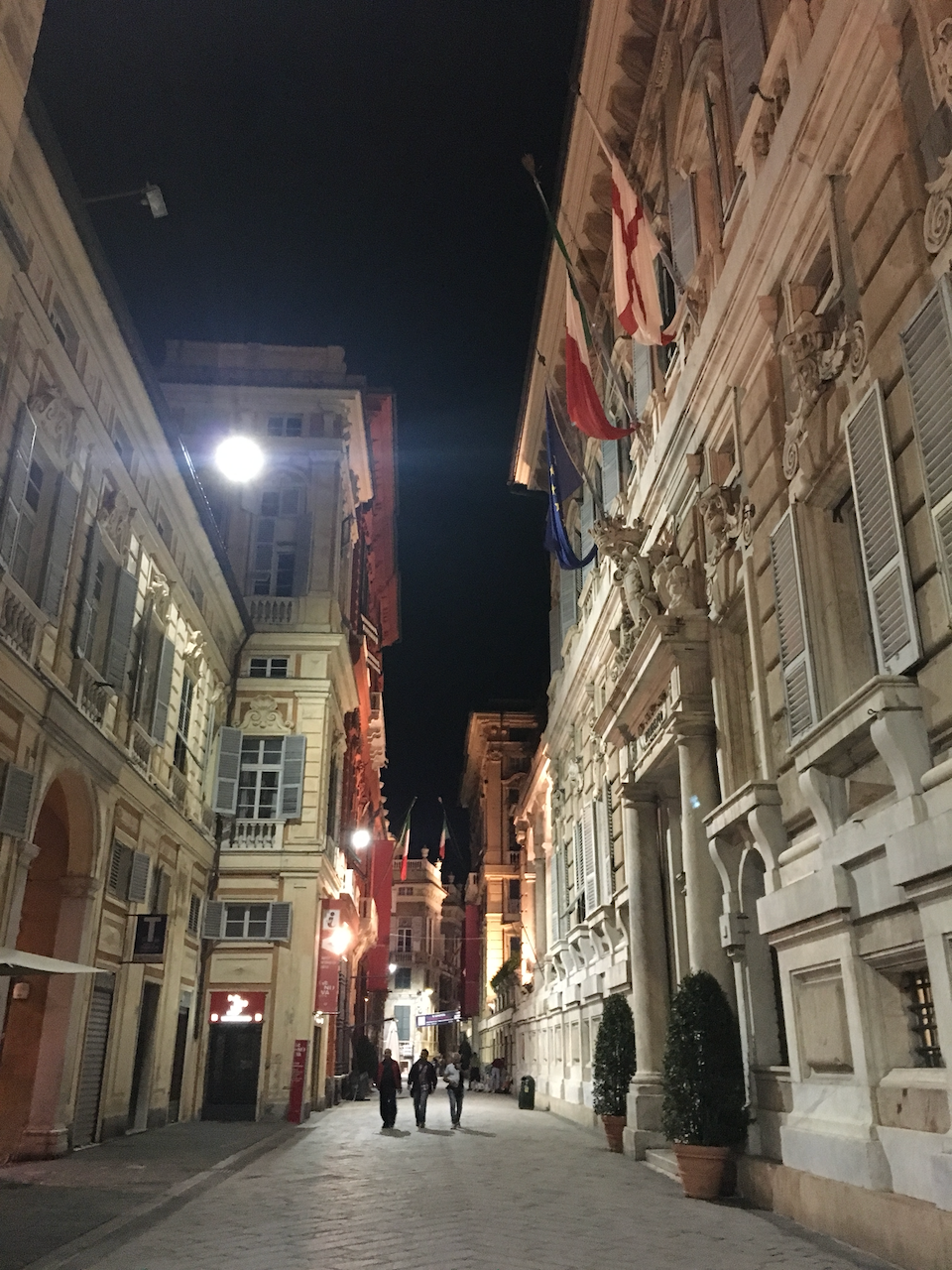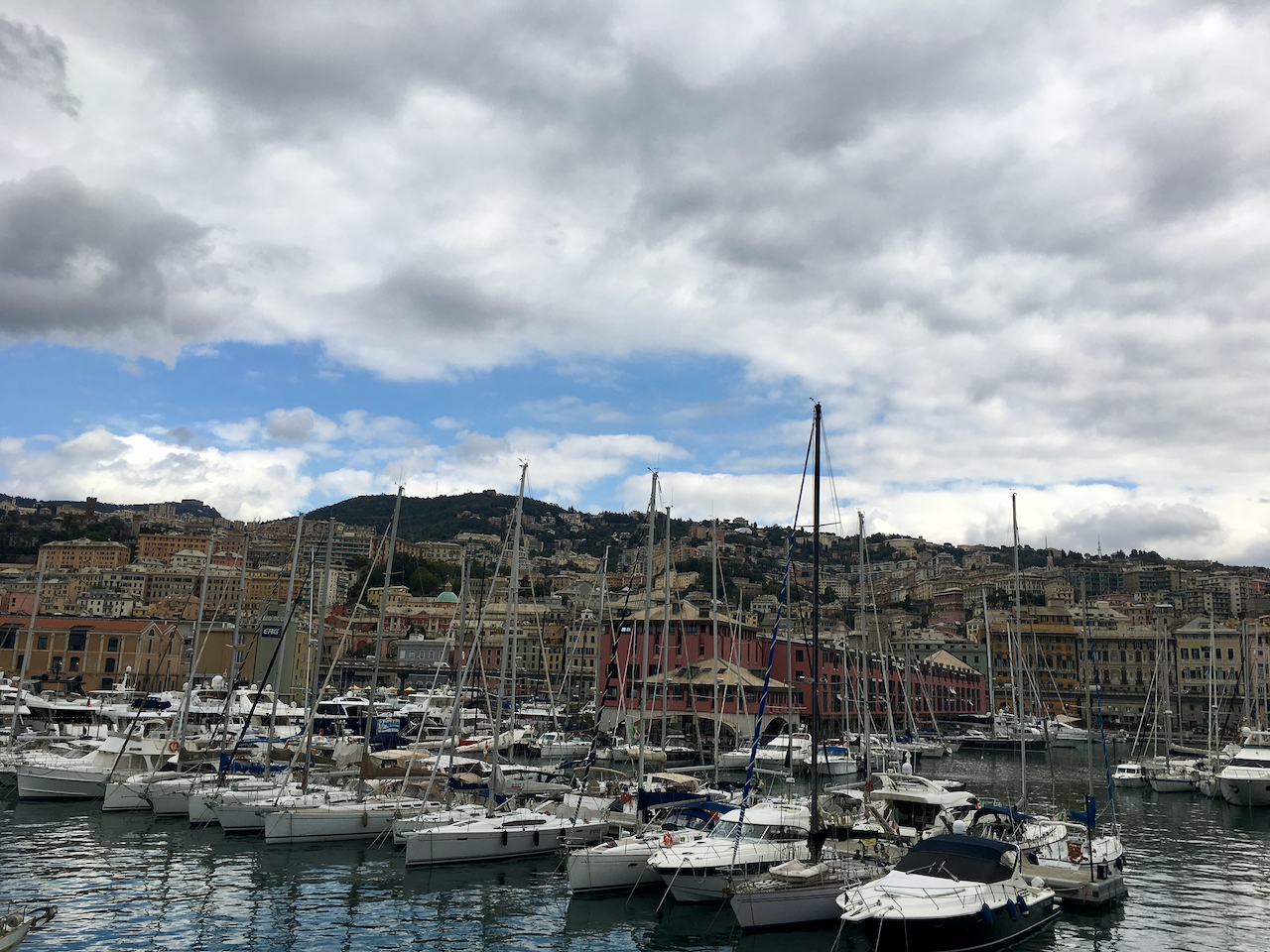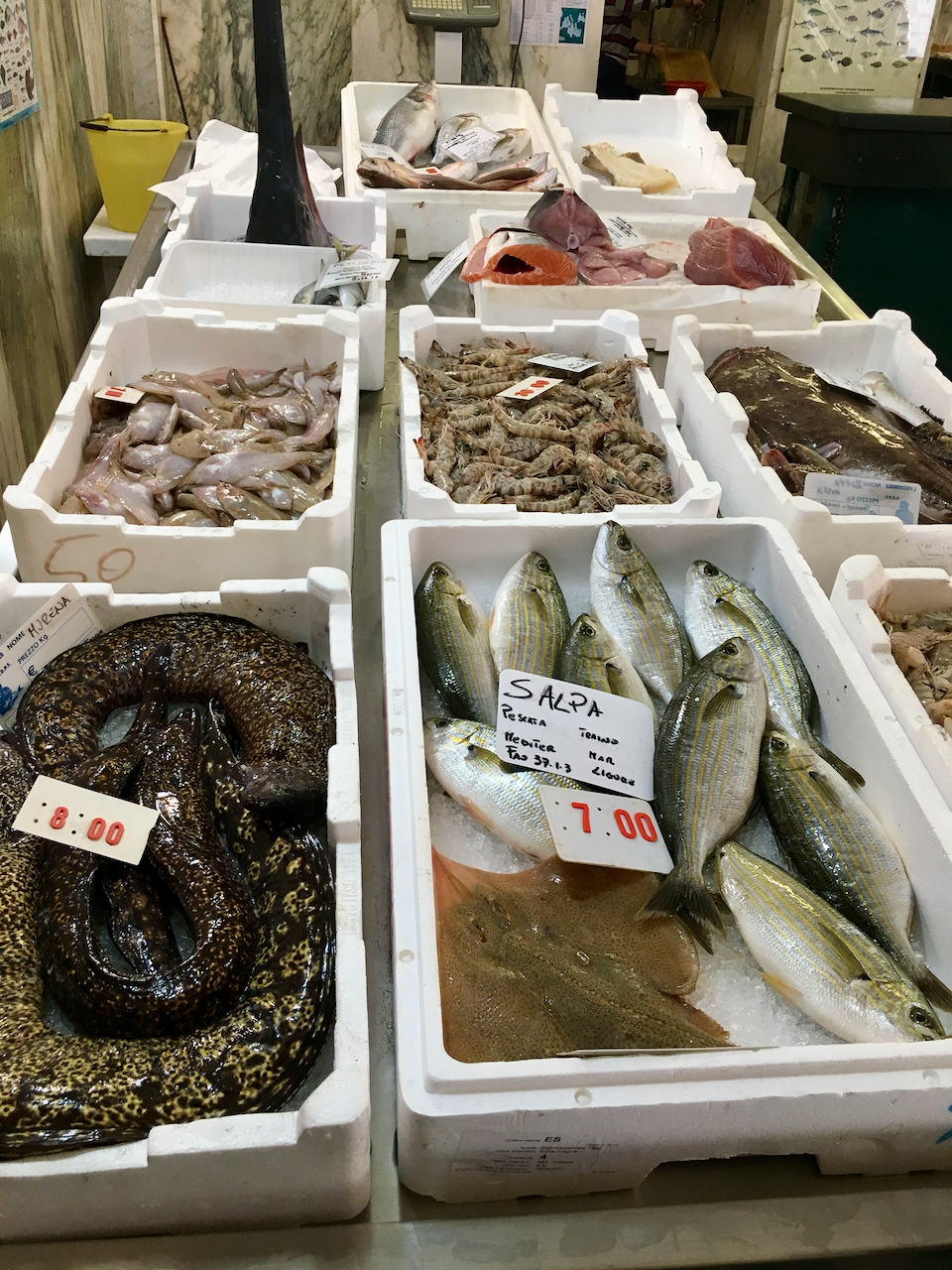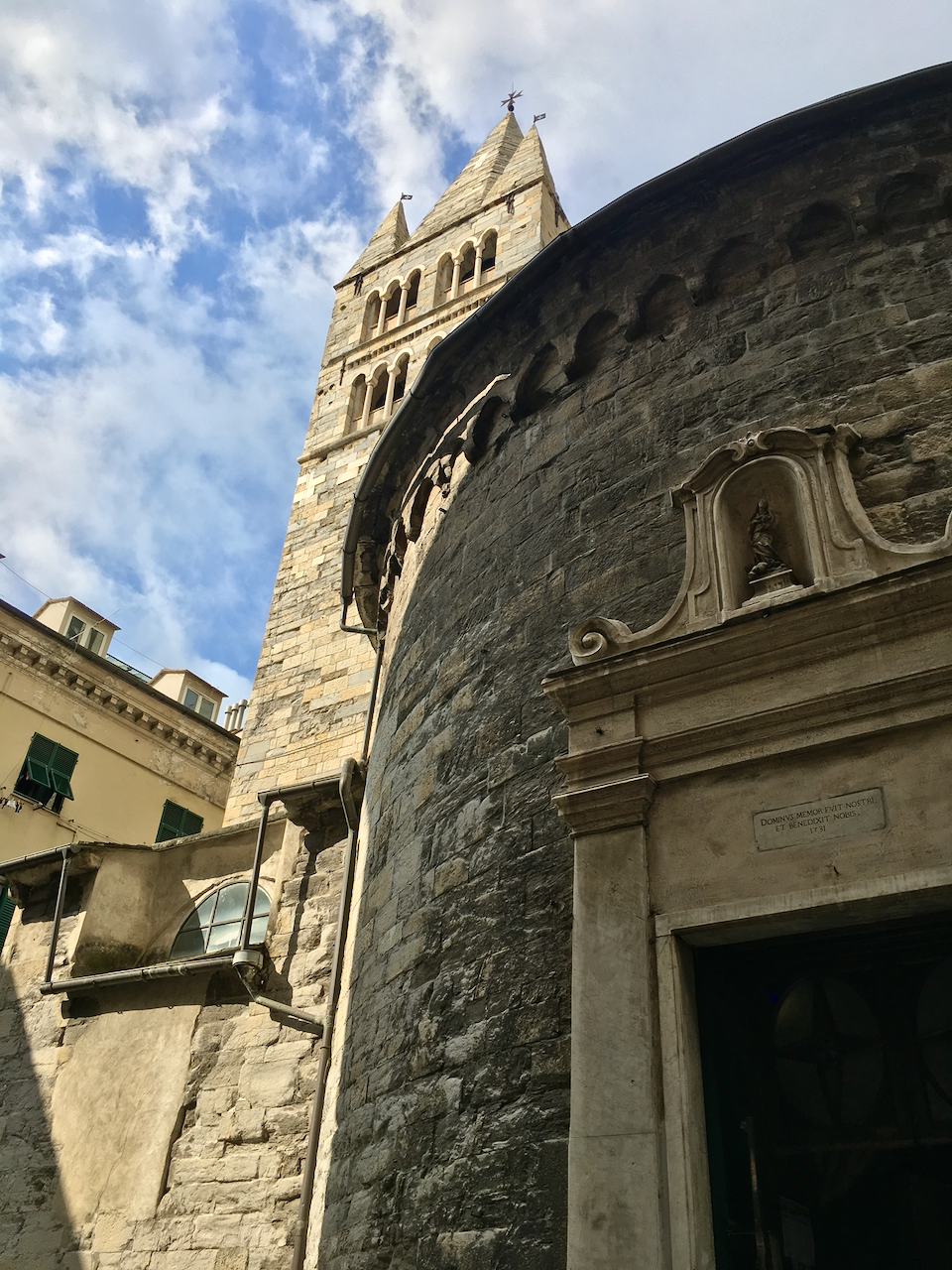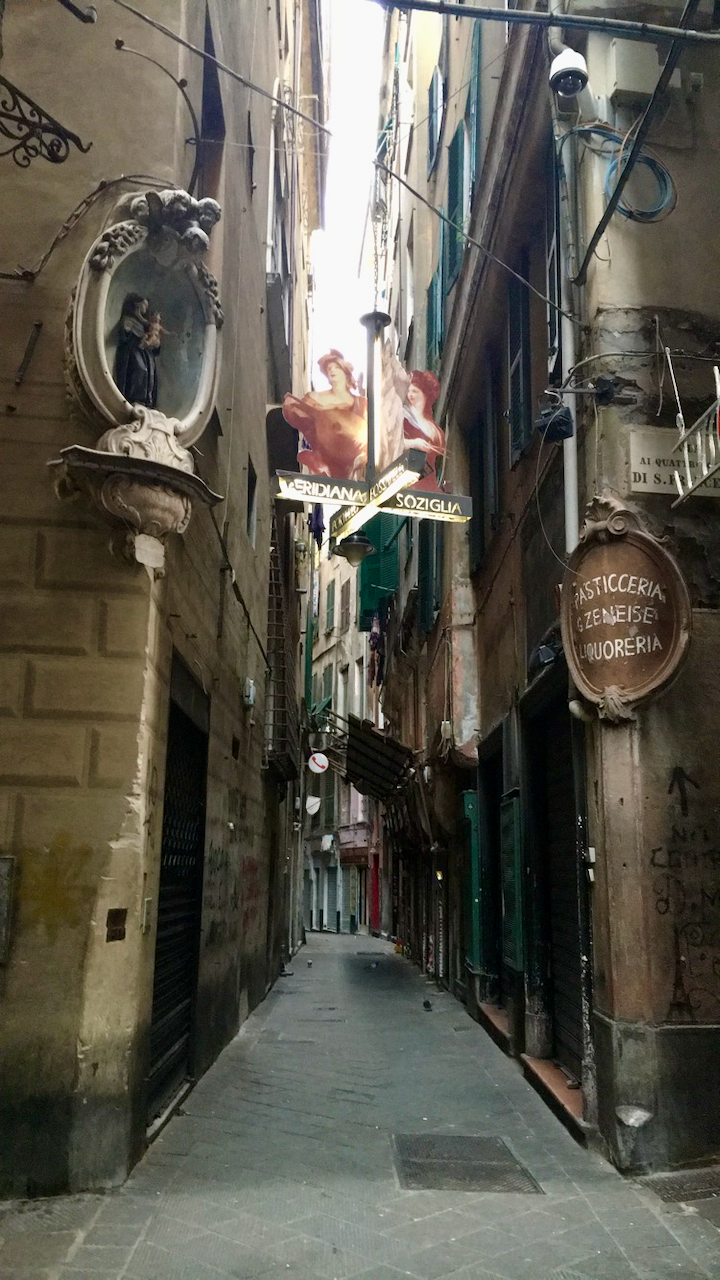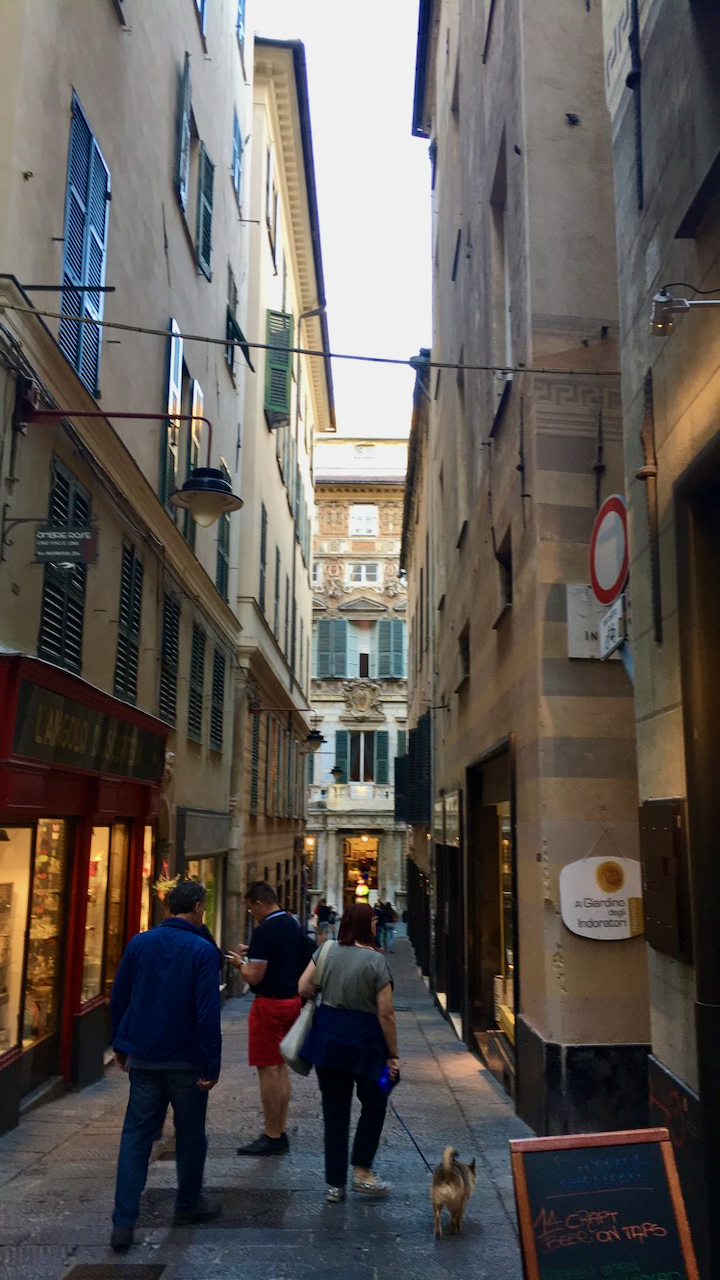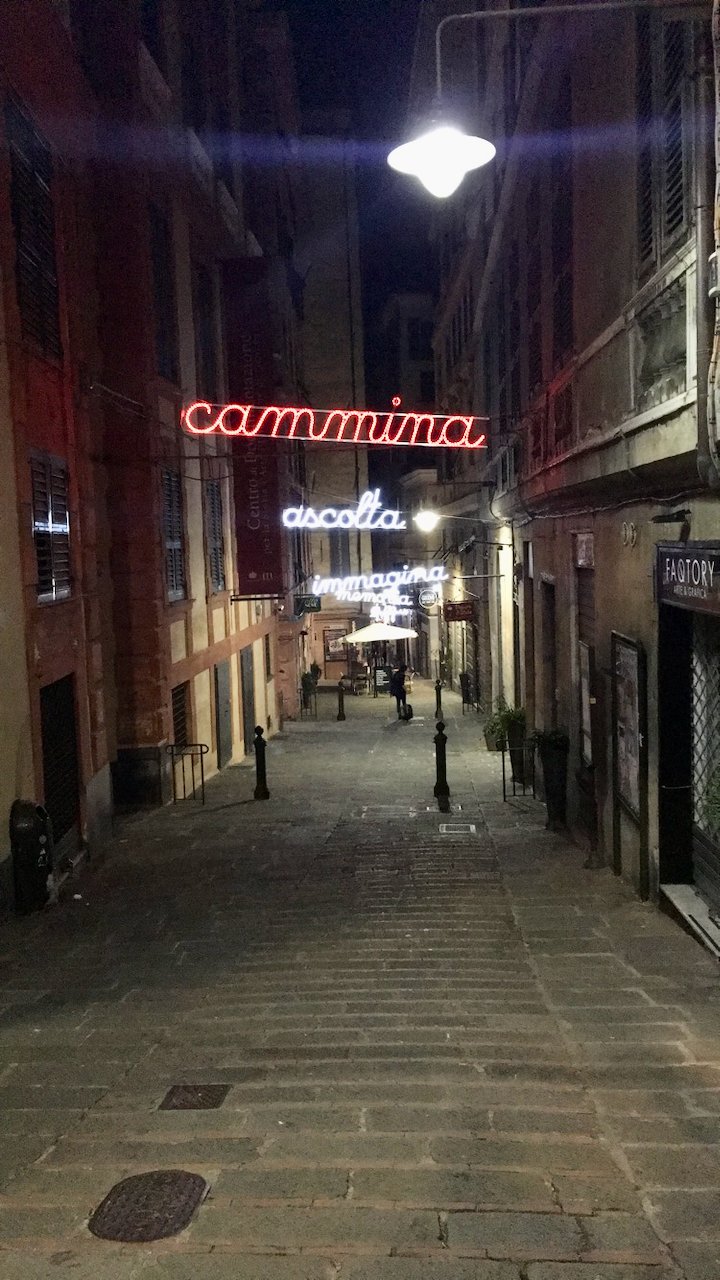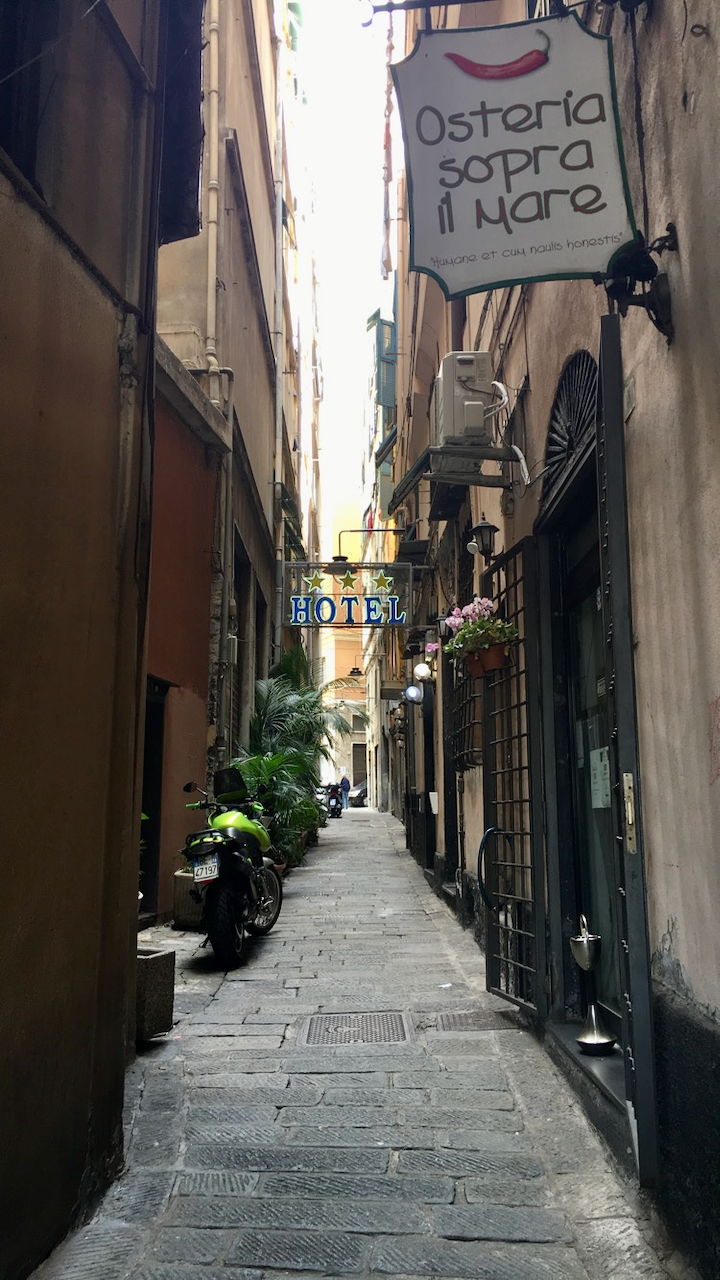Italy 2017 - Part 2 of 4: GENOA
Varazze, from the sea
“I wish we had more time to spend in Genoa,” we each said on the last night, knowing full well that we could spend every night for the rest of our lives in Genoa and likely continue the refrain. I don’t remember what I was expecting, but I certainly know it wasn’t what we found. From the (deliberately) little reading I’d done beforehand, the consensus on Genoa seemed to be, “If you must visit Genoa, here are a few things to keep you busy until you leave.” But whatever tourism board is charged with highlighting this underrated gem is doing the world a disservice with their almost criminal malfeasance.
Genoa is, simply put, a city of endless and wonderful surprises.
Simultaneously picturesque and foreboding; challenging, but intensely rewarding to those willing to explore far beyond their comfort zone; rough around the edges (and even in the middle, if we’re to be honest) but hiding unexpected laughter or music just around a dark corner. A city of hills and alleys, Genoa rewards an almost reckless exploration by hiding beauty that must be discovered on its own terms. Yes Milan is accessible, but good lord Genoa is worth the work.
To tell our story of Genoa though, I need to give some backstory as to how we found ourselves there. Originally, Genoa was originally less of a destination in and of itself, and more of a jumping-off point for a different part of our trip. One of the reasons we’d come to Italy was so that I could visit the small Italian Riviera town where my family had come from four generations back.
A town built by fisherman and shipbuilders, Varazze peaked at 18,000 people two hundred years ago, and currently sat at around 13,000. It was well off the beaten path, and when we were able to find mention of it at all in tourism books, it was always as a footnote on the way to somewhere else. But Varazze was our destination, which meant stopping somewhere that would allow us to hop the local trains into this small town out in the middle of nowhere.
I had hoped to find some sense of my family’s history there beside the Mediterranean. Secretly, I’d also hoped to see the castle my great grandfather had sold in order to survive The Great Depression; though done to provide for his family, the sale also served as the final severing of the link between life in this new country and the old. My whole life there had been family tales and bits of information about this castle. Stories and lore. And I wanted to see it - and the place we came from - with my own eyes.
Stepping off the train, we walked over to the Mediterranean - my first time seeing it with my own eyes. And I looked back upon the entirety of this small city that so long ago had been my family’s home.
“This is where I came from,” I remember thinking. And I may have even said so out loud. So standing on the jetty, I stared out at a thousand years of familial history laid before me, and prepared myself to understand who we were, and where we came from.
But I didn’t find what I was looking for in Varazze.
I didn’t find any of it.
What I found instead was a town that had erased its own history, and rebuilt itself with tourist traps, yachts, and businesses that serviced both. The old family castle was gone, lost to time, indeterminable events, and unknown motivations. The only remaining castle within the town had been built in the late 1930s to draw in tourists - an imitation of history serving as an accepted replacement.
We walked all over the small town - from the rocky outcroppings into the Mediterranean that launched boats long ago, up as high into the mountains as the roads went - at first looking for the castle, but later just looking for something - anything - that connected the town I came from and…well, me.
But I didn’t find it.
So late that afternoon, disappointed and dejected, we sat on a curb beside the last standing section of a pre-Roman wall that used to encircle and protect the city - and that now served to keep the trash cans for a nearby apartment from sliding down the hill - and we decided to catch the early train back to Genoa.
Varazze wasn’t what I’d hoped it would be. At all. Ultimately, in an era that’s moved beyond prioritizing shipbuilding, I expect that, much like my grandfather, it also sold its final connection to the past in order to survive. Regardless, whatever I was hoping to find had long since slipped over a horizon.
The good news though is that some cities feel differently about their past.
Enter: Genoa.
From the moment we entered Genoa, high on Milan and drunk on gelato, the city felt starkly different. Whereas Milan was mostly flat, Genoa is a city defined by mountains and sea; a city built where the Alps and the Apennines find their final resting place and slip beneath the Mediterranean. The “skyline” of the city is beautiful green hills dotted with yellow and pink buildings that rise seemingly forever into the distance. But as much as the hills dominate the landscape, the sea is what made Genoa. From food, to industry, to science, to leisure, Genoa was inexorably linked to, and has its culture defined by, the Mediterranean.
From its inception, Genoa was built on fishing, and like many similar cities, that means the city started at the water, and slowly spread outward from there over time. But unlike Milan, which seems content to remake itself twice a year during spring and fall fashion week, Genoa is visibly, overtly, *intentionally* old. Not in the way that Rome or Florence define themselves by their history, but in a more practical day-to-day “we’re still using this because it’s worked for 800 years and there’s no need to change it” way. A way that, if not “embraces” then at least actively acknowledges time’s decay. Everything to our sight, in every direction, was built the better part of a millennia ago, and had been renovated or repurposed several dozen times along the way, but never rebuilt into or replaced by something modern.
Just getting to our apartment from the train station revealed so much of the city to us. We headed down a few winding roads that lead into the city center, then turned off onto a cobbled road that took us past fifteenth century palaces and re-re-re-repurposed town squares and cafe-dotted city squares. You know - Europe.
Everything was lovely and charming until we found ourselves directed to turn right, and proceed down a dark alley that seemed to deliberately pull itself away from the afternoon sunlight. Then another. Then the walls closed in.
As the alley got darker by the foot, I wondered whether it ever received sunlight or whether it was perhaps unperturbed by direct light during all but the equinoxes. Reaching out, I could touch the buildings on both sides as we moved single-file between nine story stone buildings. Soon after, the sound of the outside city disappeared entirely, and we were maneuvering in the silent mid-darkness as our luggage “tack-a-tack-a-tack”ed behind us on the uneven streets through areas that every survival instinct was telling us would be our “last known location.”
A few turns later, we reached our apartment: a fourteenth century palace for dignitaries, converted to a halfway house some centuries later, and now serving as an AirBnB for perhaps unwitting Americans. The door was metal over oak, with spikes facing outwards - and then at some point in the recent past, a keyhole was drilled out to accommodate a more modern security system. Inside, the first sense was the distinct smell of stone and mildew that announces buildings of this age - I’ve smelled it in grottos and cathedrals and champagneries alike; the smell of hundreds of years of stoic witness to human activity. Neither stately nor decayed - simply existing.
Ten minutes later, we’d exited the apartment and promptly gotten lost. I’m not going to lie: neither of us was comfortable at first. Years of personal experience led us both to inherently understand that dark alleys equalled danger. But what to do when five square miles around your apartment is composed of dark three feet wide streets? We didn’t have a choice but to venture out. And it’s a good thing we did, because that’s when the surprises started.
It turned out that that by unintended happenstance, we were staying in the Medieval Quarter - one of the oldest parts of the city. The decor de rigueur was stacked stone buildings a horse-width apart, most of which had been built well before the Renaissance. What I’d taken as alleys were medieval streets built ages ago, and these streets followed no modern understanding of how streets should work.
I’d later read that Henry James referred to Genoa as the “most winding, incoherent of cities” and for good reason. These streets and alleys feel no compunction about circling back around on themselves, or winding around seemingly at random, or even just intersecting a building and beginning again on the other side. Sometimes three rights makes a left, but sometimes two or six. Sometimes a street changed names without changing direction, sometimes it did the opposite.
It’s not just easy to get lost in Genoa - it’s impossible not to. In fact, the Genovese have a saying that presumes even the locals will need direction at some point: “When you get lost, just go downhill - you’ll eventually hit the ocean.” There were no well-lit boulevards and quaint coffee shops to be found here a-la Milan— this reminded me of Blade Runner without the neon: an almost subterranean city of mazes.
Slowly at first, but then more and more over the first afternoon and evening, we started to understand that we were wrong about Genoa. That within its maze-like interior lay amazing things. We discovered the most wonderful small artisan shops and the most interesting bars and restaurants set inside buildings that had been in constant use since the 1300s. We saw public performances that took our breath away and ate what can only be described as the best food we had in all of Italy - twice. We discovered beautiful, towering churches hidden away unless you were twenty feet from their entrance. We found interesting places to explore later, only to have them vanish into the maze like Brigadoon, never to be found again no matter our efforts. We got lost, then unlost, and then lost again more times than I can count.
And it wasn’t all dark alleys either - getting lost meant we began to explore the hills, climbing up and up almost indefinitely, then finding an elevator that took us further still. Then without regard for accessibility or community, we were hundreds of feet above the city in a square that held a church, several apartment buildings, a number of restaurants, a park, and a hundred people enjoying the afternoon. Going a different direction a few days later, we’d find long city streets stretching out perpendicular to the hills, with beautiful fountains and huge open spaces between massive post-Renaissance buildings that shared high-end shops and Mcdonalds alike.
Then every night, we’d stroll up Via Garibaldi with its beautiful palaces and public spaces, and head back down the dark alleys that lead back to our apartment, passing prostitutes, pop-up restaurants, art galleries, and high-end shops alike - all sharing the same space, and sometimes the same block.
Over time, we discovered that this dichotomy of everything existing side-by-side was just how the city was. Out of chaos, order. Out of contrast, culture. Out of nowhere, community. Perpetually authentic, if not always glamorous. But all together, all side-by-side, and all Genoa.
Some highlights:
The alleys have a way of soaking up sound in the most disconcerting way, so more than once we turned the corner to discover that maybe thirty feet from where we experienced the kind of silence that allows you to hear your own heartbeat, dozens of children were playing a highly-contested game of soccer against a wall, or several dozen people were enjoying aperitivo in a square. Then we’d turn the corner and by all audible cues, they’d have vanished again. Sound doesn’t work like that where I live, but in Genoa, sound works like light: both behaving by rules that only seem to make sense in Genoa.
Finding the best meal we had in all of Italy at Bella Bu, a meal so good we broke our only culinary rule and went back a second time (in fact, making the reservation while we were still at the table for the first night.) Every single thing we had there ranked in the top five dishes we’d eaten in Italy, and I will dream of the pavlova we had for dessert for the rest of my life.
Seeing, in the middle of the day, a man slowly driving a white piano down Via Garibaldi. On top of the piano, a living music box ballerina slowly twirled en pointe, matching her movements to his delicate melody. (Yes, I took video.)
Finding our second best meal just one block up from the ocean, in an eight table locals only place where the owner/waiter spoke so little English that we didn’t realize they only had a prix-fixe lunch menu and just agreed to whatever was suggested. The pesto pasta was superb, the fried anchovies were the best I’ve ever had, and the wine was…prolific. It was one hell of a lunch.
Finding a craft beer and bagels bar (yes, that’s not a typo) that had two separate styles of beer I’d never even heard of before, as well as a 9%ABV Double-IPA that was so smooth it may as well have been a fruity wheat beer.
In Milan, the morning coffee came from a Nespresso - a sleek machine that had a team of designers to ensure each element had the right tactile and visual feel to justify its price. In Genoa, we had a Moka Pot - a nearly century old contraption that has barely changed since its creation - and a kettle if we wanted to make an americano. I felt this an apt metaphor for both cities.
Genoa is a city of contrasts. Of hills and alleys. Of dark streets even at midday, and of bright exits into open plazas of laughing children. It’s gritty, and a bit dangerous, and revels in its medieval heritage - with everything that implies. It’s a city where palaces abut the slums just like the mountains intersect the sea. It’s unapologetic and entirely authentic, and the single most surprising city I’ve ever encountered.
My first reaction was that Milan and Genoa were, as much as is possible for cities, complete opposites. Silver spoon versus blue collar. But after spending three days trying to find the right words to describe the contrast, I think Genoa and Milan strike me as fraternal twins: different in some obvious external ways, but also obviously connected in a familiar - and familial - manner.
If Milan is what Italy wants to be, then Genoa is what it actually is: messy, often at-odds with itself, and simultaneously blessed and burdened by its history. But where Milan works to hide or gloss over the messy bits of its past, Genoa revels in them equally, finding joy in the contrast that comes with a storied history.
In the end, I didn’t find what I was looking for in Varazze - but by some combination of luck and kismet, I found so much more than I expected wandering the “winding, incoherent” streets of Genoa.
Putting Genoa behind us, it’s raining as we enter Florence - perhaps more than any other city, the cradle of western civilization. The Renaissance brought forth a new age of understanding, science, and art, and Forence was its nexus. I look forward to seeing what I discover here amongst the cobbles.
